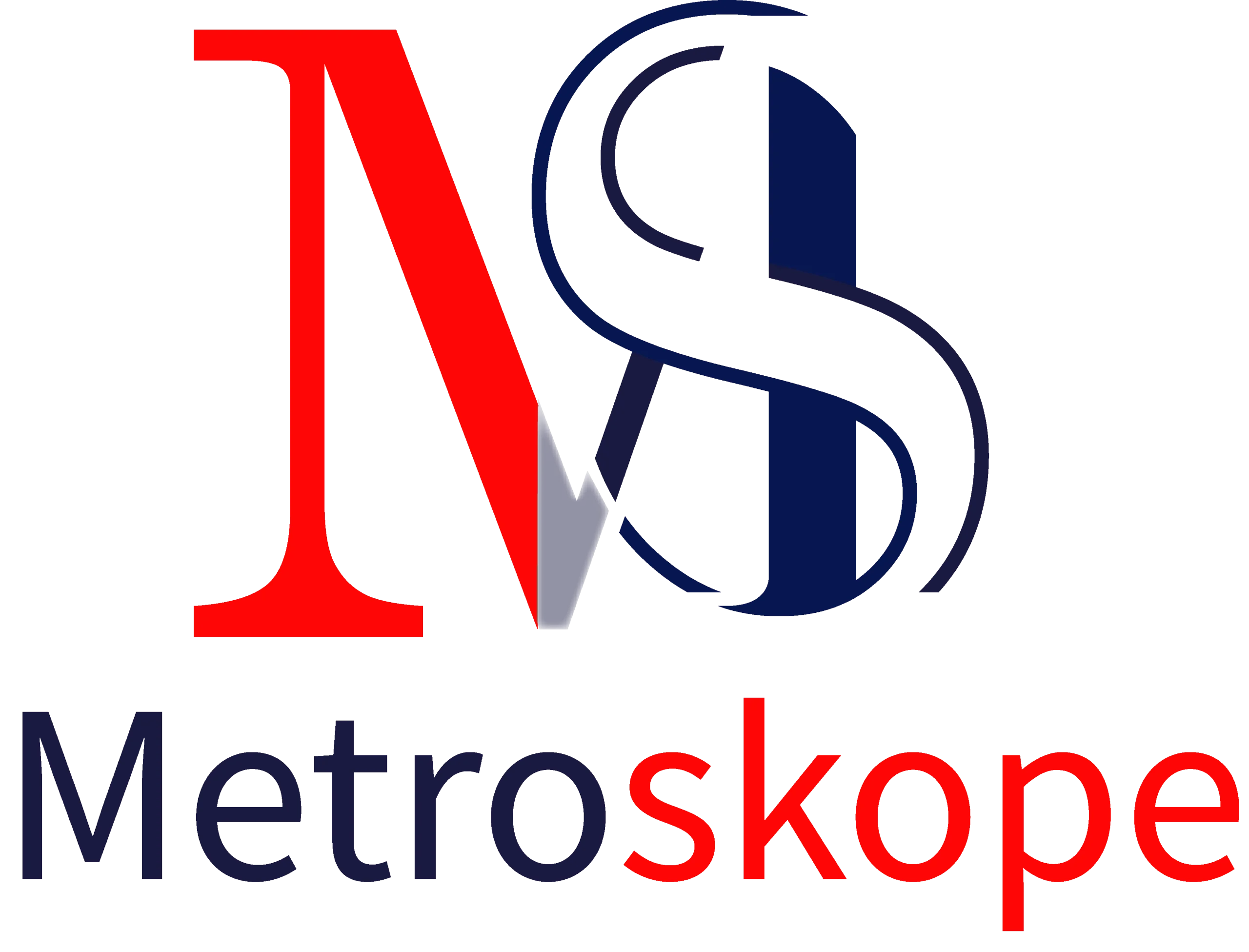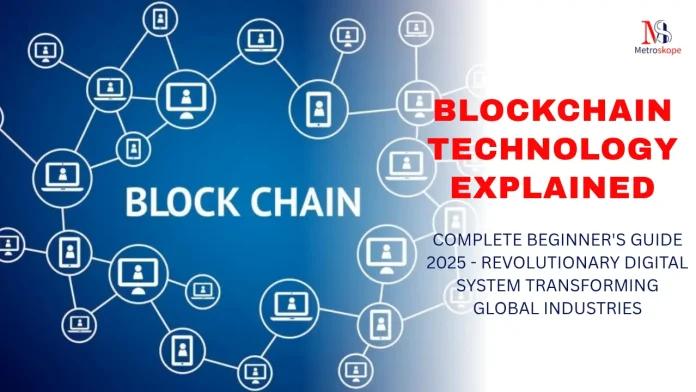What is Blockchain Technology: A Simple Explanation
Blockchain Technology Explained: Blockchain technology is best understood as a digital record book that is shared among many computers around the world.
Unlike traditional record books that one person or organization controls, blockchain records are maintained by thousands of computers simultaneously, making them virtually impossible to fake or manipulate.
Think of blockchain as a chain of digital containers (blocks) where each container holds information about transactions or events.
Once a container is filled and sealed, it’s connected to the previous container, forming an unbreakable chain. This design ensures that information cannot be changed without everyone in the network knowing about it.
The revolutionary aspect of blockchain lies in its decentralized nature. Instead of trusting a single bank, government, or company to maintain records,
blockchain distributes this responsibility across a global network of computers, eliminating single points of failure and reducing the need for intermediaries.
Core Components of Blockchain Technology
Blocks: Digital Information Containers
Each block in a blockchain contains three essential elements:
- Transaction data: The actual information being stored
- Timestamp: When the block was created
- Hash: A unique digital fingerprint that identifies the block
Cryptographic Hashing
Hashing converts information into a fixed-length string of characters that acts like a digital fingerprint.
If anyone tries to alter the information in a block, the hash changes completely, immediately alerting the network to potential tampering.
Consensus Mechanisms
Before new blocks are added to the chain, the network must agree that the information is valid. Different blockchain networks use various consensus methods:
- Proof of Stake (PoS): Validators are chosen based on their stake in the network
- Proof of Work (PoW): Computers compete to solve complex mathematical puzzles
- Delegated Proof of Stake (DPoS): Token holders vote for delegates who validate transactions
How Blockchain Technology Works: Step-by-Step Process
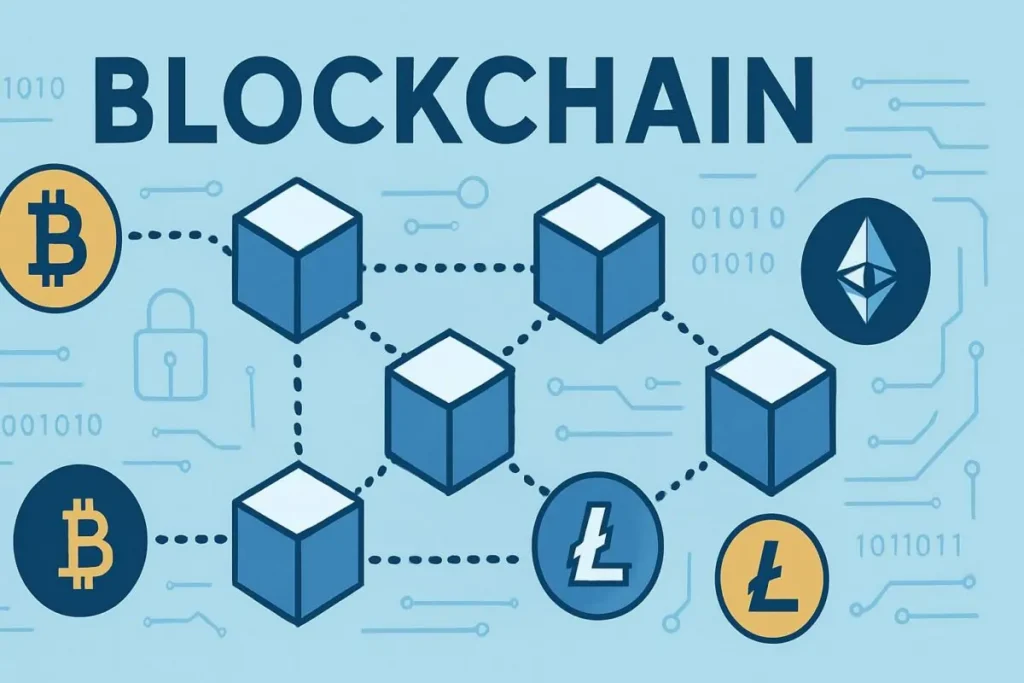
Step 1: Transaction Request
When someone wants to transfer digital assets or record information, they initiate a transaction request. This could be sending cryptocurrency, recording a medical record, or tracking a product shipment.
Step 2: Digital Broadcasting
The transaction request is broadcast to the entire blockchain network, which consists of thousands of computers (nodes) worldwide that maintain copies of the blockchain.
Step 3: Network Validation
Network participants verify the transaction’s authenticity using predetermined rules. They check factors like account balances, digital signatures, and compliance with network protocols.
Step 4: Block Formation
Valid transactions are grouped together with other verified transactions to form a new block. Each block also includes a reference to the previous block, maintaining the chain’s integrity.
Step 5: Consensus Achievement
The network uses its consensus mechanism to agree that the new block should be added to the blockchain. This process ensures all participants have the same version of the ledger.
Step 6: Block Addition and Distribution
Once consensus is reached, the new block is permanently added to the blockchain and distributed to all network participants, completing the transaction process.
Latest Blockchain Advancements in 2025
Artificial Intelligence Integration
AI-powered blockchain analytics have revolutionized data interpretation in 2025. Machine learning algorithms now analyze blockchain data to predict market trends, detect fraudulent activities, and optimize network performance.
This integration enables automated smart contracts that can adapt to changing conditions.
Quantum-Resistant Cryptography
With quantum computing advances threatening traditional encryption, blockchain networks have implemented quantum-resistant algorithms to maintain security.
These advanced cryptographic methods ensure blockchain systems remain secure against future quantum computer attacks.
Interoperability Solutions
Cross-chain bridges and protocols now enable seamless communication between different blockchain networks.
Users can transfer assets and data across previously incompatible systems, creating a more connected blockchain ecosystem.
Sustainable Consensus Mechanisms
Energy-efficient consensus models have become standard in 2025. Proof of Stake and hybrid consensus mechanisms consume over 99% less energy than traditional Proof of Work systems, addressing environmental concerns while maintaining security.
Layer 2 Scaling Solutions
Advanced scaling technologies like Lightning Network, Optimistic Rollups, and Zero-Knowledge Rollups now process millions of transactions per second while maintaining blockchain security, making blockchain practical for everyday applications.
Real-World Blockchain Applications Across Industries
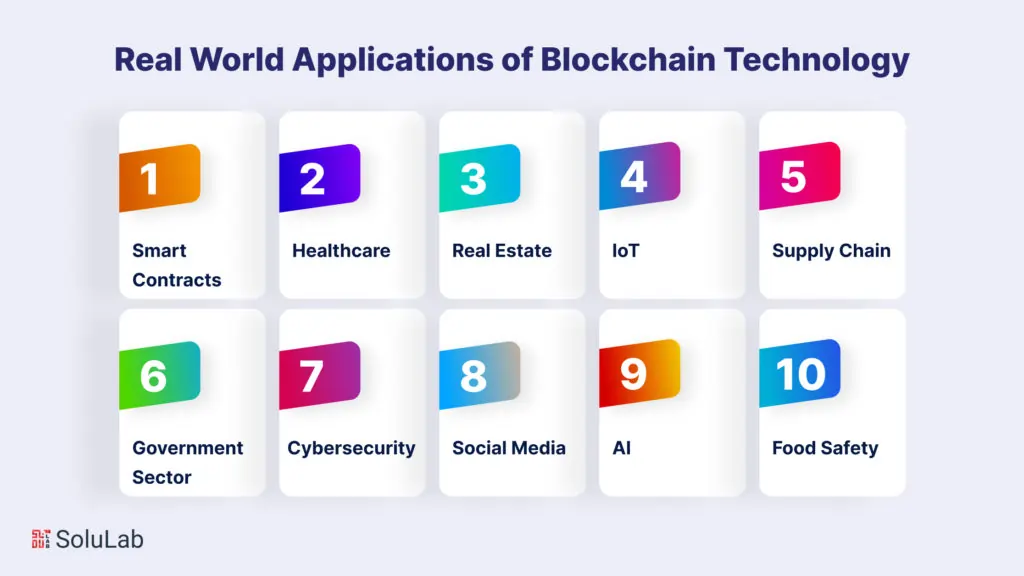
Financial Services Revolution
Digital Banking and Payments
Traditional banks use blockchain for instant cross-border payments, reducing transaction times from days to minutes while cutting costs by up to 80%. Companies like JPMorgan use proprietary blockchain networks for institutional transfers.
Central Bank Digital Currencies (CBDCs)
Over 100 countries are developing or piloting government-issued digital currencies in 2025. China’s Digital Yuan and the European Union’s Digital Euro demonstrate how governments are modernizing monetary systems using blockchain technology.
Decentralized Finance (DeFi)
Peer-to-peer financial services enable users to lend, borrow, and trade without traditional banks. DeFi platforms have locked over $200 billion in value, providing financial services to previously underbanked populations.
Healthcare Data Management
Secure Patient Records
Blockchain enables secure sharing of medical records between healthcare providers while maintaining patient privacy.
Patients control access to their data, and providers can instantly access complete medical histories during emergencies.
Pharmaceutical Supply Chain
Drug authenticity verification prevents counterfeit medications from entering the supply chain.
Patients can scan QR codes to verify their medications’ authenticity and track their journey from manufacturer to pharmacy.
Clinical Trial Integrity
Research data stored on blockchain prevents manipulation of clinical trial results, ensuring transparency in medical research and accelerating the development of new treatments.
Supply Chain Transparency
Food Safety Tracking
Major retailers like Walmart use blockchain to track food products from farm to consumer.
When contamination occurs, companies can identify affected products within seconds rather than weeks, preventing widespread illness.
Luxury Goods Authentication
High-end brands use blockchain to provide certificates of authenticity for luxury items, combating counterfeiting and protecting brand reputation. Consumers can verify product authenticity through mobile apps.
Sustainable Sourcing
Companies track environmental and social compliance throughout their supply chains, ensuring products meet sustainability standards and ethical labor practices.
Digital Identity and Privacy
Self-Sovereign Identity
Individuals control their digital identities without relying on centralized authorities.
Users can prove their identity for services like banking or travel without sharing unnecessary personal information.
Academic Credentials
Universities issue tamper-proof digital diplomas on blockchain, eliminating credential fraud and enabling instant verification by employers worldwide.
Real Estate Innovation
Property Tokenization
Real estate assets are divided into digital tokens, allowing multiple investors to own fractions of expensive properties. This democratizes real estate investment and increases market liquidity.
Title Management
Property ownership records on blockchain eliminate title disputes and streamline real estate transactions. Smart contracts automatically execute property transfers when conditions are met.
Gaming and Entertainment
Play-to-Earn Models
Gamers earn cryptocurrency and own in-game assets as NFTs that can be traded across different games and platforms. This creates new economic opportunities for players worldwide.
Digital Content Rights
Artists and creators use blockchain to prove ownership of digital content, enabling new monetization models and protecting intellectual property rights.
Government and Public Services
Digital Voting Systems
Several countries have implemented blockchain-based voting platforms that provide transparent, auditable elections while maintaining voter privacy. These systems eliminate concerns about vote tampering.
Public Record Management
Government agencies use blockchain for transparent and immutable public records, reducing bureaucracy and increasing citizen trust in government operations.
Key Benefits of Blockchain Technology
Enhanced Security
Cryptographic protection and distributed storage make blockchain systems extremely resistant to hacking attempts.
Even if some network nodes are compromised, the system remains secure.
Elimination of Intermediaries
Direct peer-to-peer transactions reduce costs and processing times by removing traditional intermediaries like banks, clearinghouses, and brokers.
Global Accessibility
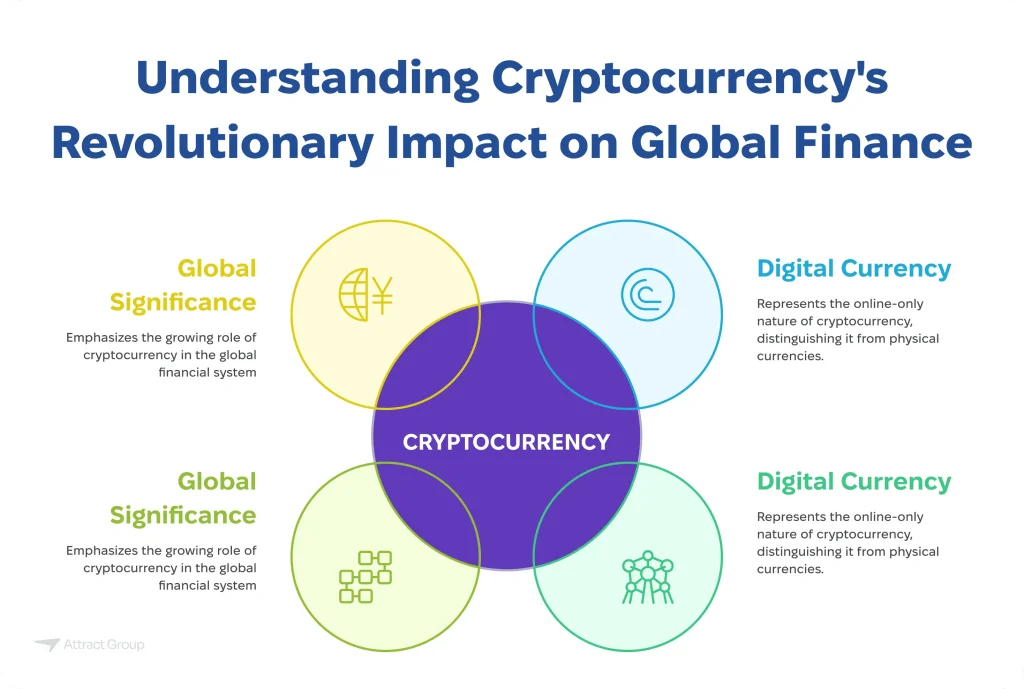
24/7 operation without geographic restrictions enables global commerce and provides financial services to underbanked populations in developing countries.
Transparency and Auditability
Complete transaction history visibility promotes accountability while maintaining privacy through cryptographic techniques.
Immutable Records
Permanent and unchangeable records provide reliable audit trails for compliance, legal, and historical purposes.
Current Challenges and Solutions
Scalability Improvements
While early blockchain networks processed limited transactions per second, Layer 2 solutions and new consensus mechanisms now enable millions of transactions per second while maintaining security.
User Experience Enhancement
Simplified interfaces and mobile applications make blockchain technology accessible to non-technical users, driving mainstream adoption across various demographics.
Regulatory Clarity
Government frameworks and industry standards are providing clearer guidelines for blockchain implementation, reducing uncertainty for businesses and developers.
Energy Efficiency
Transition to Proof of Stake and hybrid consensus mechanisms has dramatically reduced blockchain’s environmental impact while maintaining security and decentralization.
Future Outlook and Emerging Trends
Internet of Things Integration
IoT devices increasingly use blockchain for secure data sharing and automated payments, enabling smart cities, autonomous vehicles, and connected infrastructure.
Artificial Intelligence Synergy
AI and blockchain convergence creates intelligent systems that can analyze blockchain data, optimize network performance, and enable self-executing smart contracts.
Central Bank Digital Currency Adoption
Government-issued digital currencies will become more widespread, potentially replacing cash in many countries and modernizing monetary policy implementation.
Enterprise Blockchain Solutions
Traditional businesses integrate blockchain into existing systems rather than building entirely new platforms, accelerating adoption across industries.
Getting Started with Blockchain Technology
For beginners interested in exploring blockchain:
- Start with educational resources from reputable sources to understand fundamental concepts
- Experiment with user-friendly cryptocurrency wallets to experience blockchain transactions firsthand
- Explore blockchain explorers like Etherscan to observe real-time network activity
- Follow industry news and developments to stay informed about latest trends
- Consider online courses from universities or blockchain organizations for deeper learning
Blockchain technology in 2025 represents a mature, transformative infrastructure that extends far beyond its cryptocurrency origins.
The technology’s evolution into a comprehensive platform supporting diverse applications across multiple industries demonstrates its potential to reshape how we store data, conduct transactions, and establish trust in digital interactions.
The combination of enhanced security, transparency, and efficiency continues driving adoption across finance, healthcare, supply chain, government, and entertainment sectors.
As blockchain integrates with AI, IoT, and other emerging technologies, its impact on society will continue expanding.
Understanding blockchain fundamentals is becoming increasingly important as digital transformation accelerates.
Whether through improved financial services, enhanced supply chain transparency, or innovative digital identity solutions, blockchain technology is creating new opportunities and efficiencies that will define the next decade of technological progress.
The future of blockchain looks promising, with continued innovation and mainstream adoption delivering on the technology’s potential to create a more transparent, efficient, and equitable digital world for everyone.
